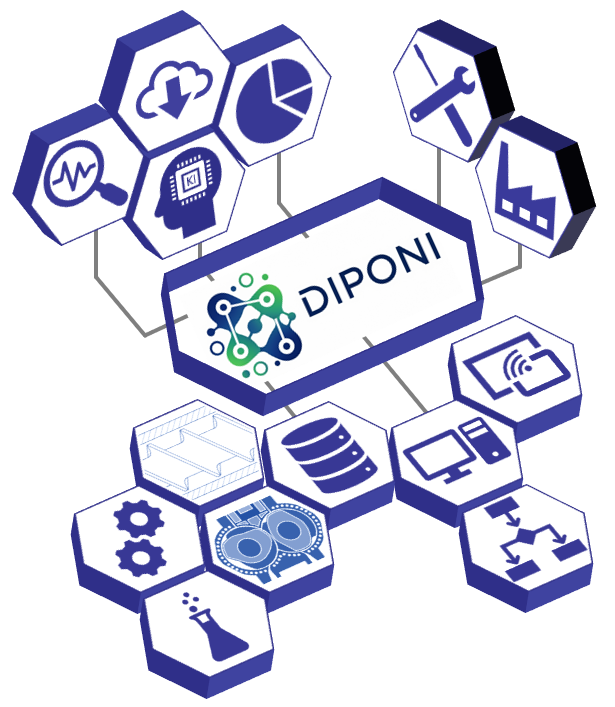Project runtime: 01.05.2025 - 30.04.2029
DIPONI aims to complete the digitization of rubber processing initiated in the previous projects (DigitRubber and INSUKA) and to be able to provide decision support via an integrated control AI at various levels of production in order to minimize production waste, reduce CO2 emissions and operate the manufacturing process at the optimum quality level. This quality-related control AI is expanded on the digital level with profitability data (production planning and control, ESG data). This creates an additional meta-level (“business AI”) that shows a company's decision-makers not only technically relevant quality criteria but also the economic component. If AI-controlled systems succeed in keeping the material within the recipe-specific specification at all times during the production cycle, i.e. declaring both the rubber compound and the semi-finished product or vulcanized moulded part produced as a good part, a fully digitalized manufacturing process would be achieved. This would also make it possible for the first time to train the AI to significantly reduce the time required for unwanted start-up processes, such as those that occur during extrusion, e.g. when changing the compound, in order to conserve material and energy resources. In addition, rejects that are still possible and cannot be completely avoided should at least be recognized as early as possible. If AI-controlled processes succeed in keeping the material within the recipe-specific specification at all times during the production cycle, i.e. declaring both the rubber compound and the semi-finished product or vulcanized moulded part produced as a good part, a fully digitalized manufacturing process would be achieved. This would also make it possible for the first time to train the AI to significantly reduce the time required for unwanted start-up processes, such as those that occur during extrusion, e.g. when changing the compound, in order to conserve material and energy resources. In addition, rejects that are still possible but cannot be completely avoided should at least be detected as early as possible and (if possible) fed back into the process in the interests of a more effective circular economy.
